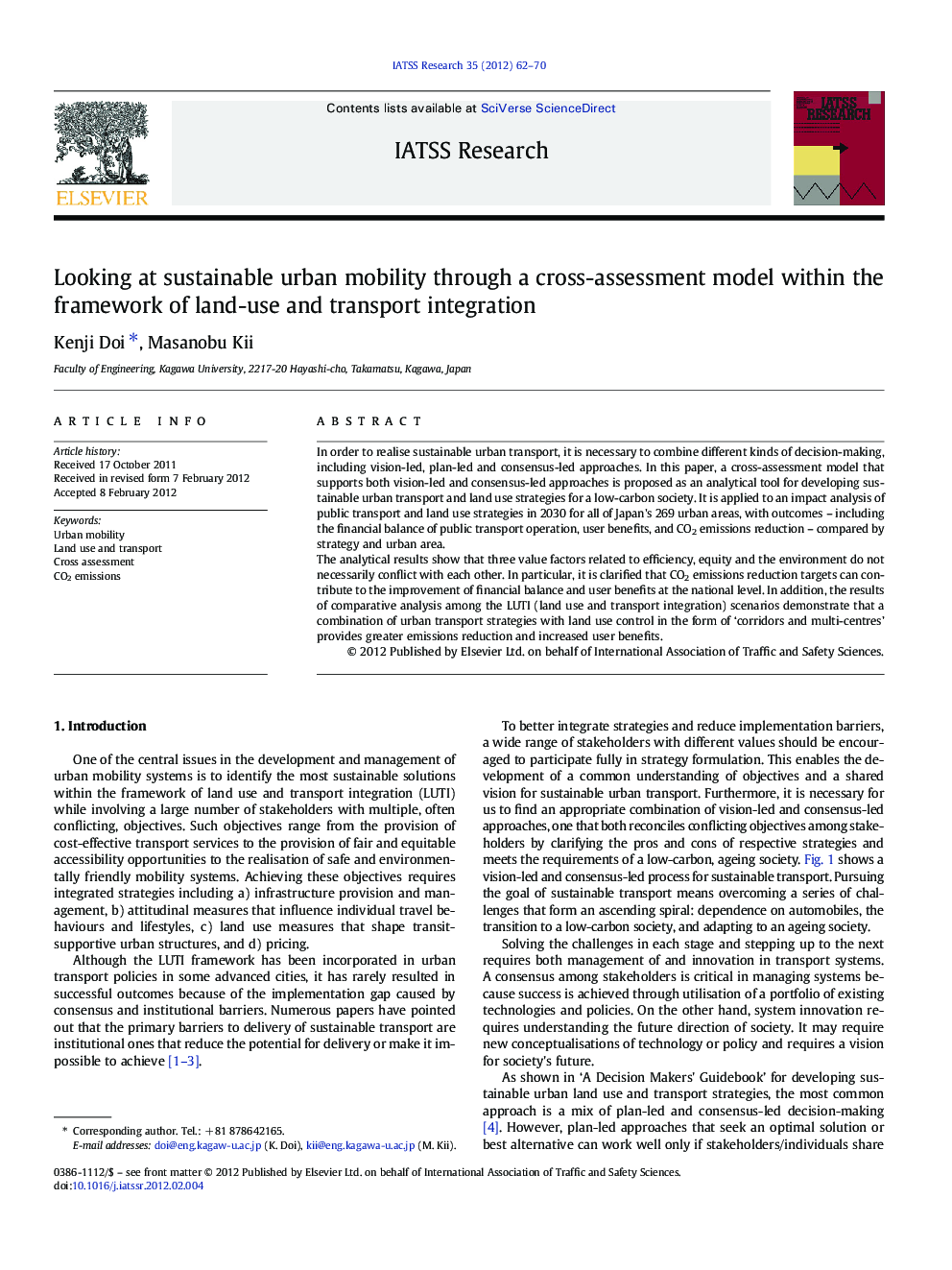| Article ID | Journal | Published Year | Pages | File Type |
|---|---|---|---|---|
| 1104723 | IATSS Research | 2012 | 9 Pages |
In order to realise sustainable urban transport, it is necessary to combine different kinds of decision-making, including vision-led, plan-led and consensus-led approaches. In this paper, a cross-assessment model that supports both vision-led and consensus-led approaches is proposed as an analytical tool for developing sustainable urban transport and land use strategies for a low-carbon society. It is applied to an impact analysis of public transport and land use strategies in 2030 for all of Japan's 269 urban areas, with outcomes – including the financial balance of public transport operation, user benefits, and CO2 emissions reduction – compared by strategy and urban area.The analytical results show that three value factors related to efficiency, equity and the environment do not necessarily conflict with each other. In particular, it is clarified that CO2 emissions reduction targets can contribute to the improvement of financial balance and user benefits at the national level. In addition, the results of comparative analysis among the LUTI (land use and transport integration) scenarios demonstrate that a combination of urban transport strategies with land use control in the form of ‘corridors and multi-centres’ provides greater emissions reduction and increased user benefits.
► A cross-assessment model for sustainable urban transport and land use strategies. ► Efficiency, equity and the environment do not necessarily conflict with each other. ► CO2 reduction contributes to the improvement of financial balance and user benefit. ► Integrated land use and transport strategies leads to CO2 reduction and user benefit.
